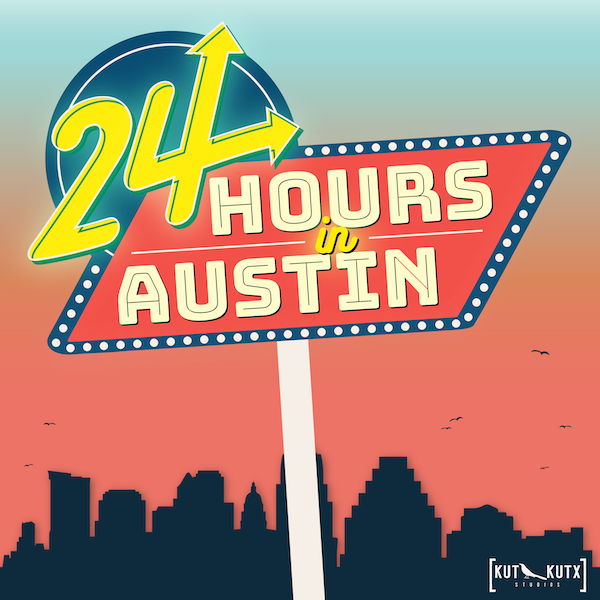If I could have any wish I would choose to be a time-traveler. Some say time travel will be possible one day, and some say it is the stuff of fairy tales. So, I guess until Elon Musk invents that mythical machine, books will have to do.
Books give us the next best thing. They can help us understand how people lived and thought and talked long ago, especially when the books were written by people who consciously sought to catalog such things in the time they lived. Frederick Law Olmsted left us such a book about his travels through Texas in the 1850s. It’s called “A Journey Through Texas: Or a Saddle-Trip on the Southwestern Frontier.” With his brother, he traveled several thousand miles around Texas, on horseback, chronicling his experiences for The New York Times – today, we’d call him a blogger. His book is a gem, an absolute treasure, a priceless time-sensitive ethnography. It is more than a snapshot; it is an intricate mural of Texas and Texans a decade after becoming a state, while the entire country headed toward civil war.
Before I share a few of his observations, let me tell you who he was. He was a farmer and eventually he became the most famous landscape architect in America. He designed Central Park in New York and Niagara Falls State Park, as well as the grounds of the U.S. Capitol and the White House. A contemporary said of Olmsted, “He paints with lakes and wooded slopes; with lawns and banks and forest-covered hills; with mountainsides and ocean views.” These achievements would come later but they give us an idea of his rare aesthetic sense and farmer practicality when he came to Texas.
He arrived in Nacogdoches in January of 1853 and then meandered on horseback all over Texas. He explored the Piney Woods, the Hill Country, the Coastal Plains, Southwest Texas and even rode a ways into Mexico.
Frederick Law Olmsted wrote often of the famous Texas northers because he was several times caught out in open country with sudden fierce winds and rapid drops in temperature. He wrote that a norther hit them on the prairie west of the Brazos. The wind kicked up mightily and the temperature dropped 12 degrees in 12 minutes, from 67 to 55. He wrote, “In five minutes, we had all got our overcoats on and were bending against [the wind] in our saddles.” By 6 p.m. that evening it was 40 degrees; the next morning it was 25. Olmsted said he couldn’t get his horse shoed that day because the blacksmith said he wouldn’t work as long as the “damned norther lasted.” The Bastrop paper wasn’t published that day either because, the editor explained, the “printing office was on the north side of the house.” Seems reasonable.
When he arrived in Austin, population 3,000, Olmsted stayed at what was supposed to be the best hotel, but found it dirty and the food inedible. He was also dismayed that there was not one bookstore in town. Nice to see that 170 years later those shortcomings have been impressively remedied.
He loved Neu-Branfels – loved with a capital L. The German communities and natural magnificence of the lands along the Guadalupe River were so impressive to him that he almost stayed in Texas. He was enchanted by the springtime wildflowers in the Hill Country and he fully embraced the German saying that “the sky is nearer in Texas.”
Riding out west to Eagle Pass, he killed an enormous six-foot rattlesnake. A man came by and told him he had just killed an even bigger one up the road a ways. Olmsted worried in the daytime that his horse would get bit, and at night he worried that a rattler would snuggle up with him in his bedroll. On this part of his journey he saw his first horny toads and so loved the little creatures that he shipped some back home to New York where he kept them as exotic pets for a couple of years.
In San Antonio, it was the river he fell in love with. “We are so struck by its beauty,” he wrote. “It is of a rich blue and pure as crystal, flowing rapidly but noiselessly over pebbles and between reedy banks.” But it was still the Wild West. He wrote of the near weekly gunfights in the plaza. “As the actors are under … excitement, their aim is not apt to be of the most careful and sure; consequently, it is, not seldom, the passers-by who suffer.”
Though Olmsted didn’t arrive in the south as a staunch abolitionist, he saw the contrast between slave-based economies and those that relied on paid labor, and found the latter far more successful. He said that a monopoly on cotton and devotion to a one-crop economy left no room for the progress that only economic diversity could bring. He objected to slavery on moral grounds as well, but found that pro-slavery advocates responded best to arguments based on pragmatics rather than righteousness.
Take a horseback ride through Texas with Olmsted. It’s the best option in time-traveling now available.





